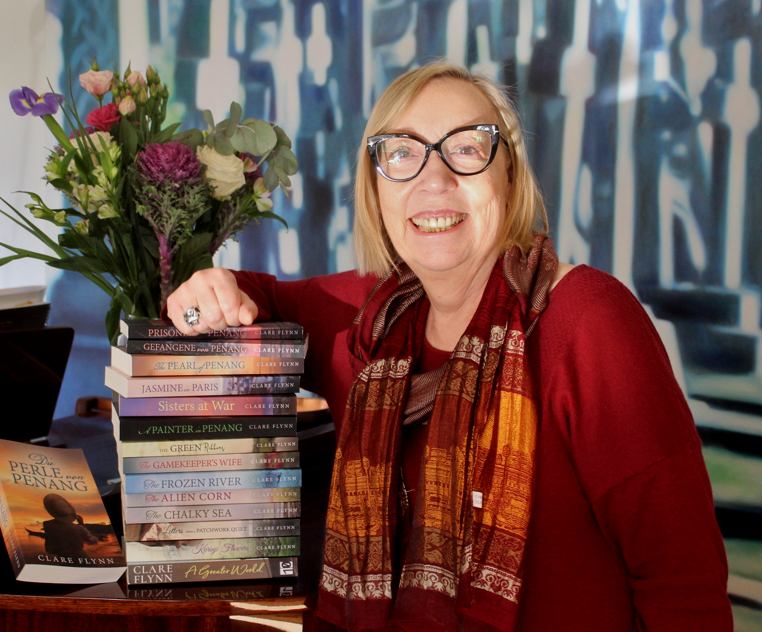 I’m delighted to welcome Clare Flynn back to the writing blog on the occasion of her (rather wonderful) new novel The Colour Of Glass. Clare Flynn is a well-established author – fifteen historical novels and a collection of short stories.
I’m delighted to welcome Clare Flynn back to the writing blog on the occasion of her (rather wonderful) new novel The Colour Of Glass. Clare Flynn is a well-established author – fifteen historical novels and a collection of short stories.
Having lived and worked in London, Paris, Brussels, Milan and Sydney, her home is now on the coast, in Sussex, England, where she can watch the sea from her windows. An avid traveller, her books are often set in exotic locations.
Clare is also a Fellow of the Royal Society of Arts, a member of the Society of Authors, the Alliance of Independent Authors, the Historical Novel Society and the Romantic Novelists Association. When not writing, she loves to read, quilt, paint and play the piano.
First of all, congratulations on your new book, The Colour of Glass. I confess I had only been a general admirer of beautiful windows, ancient and modern, but found your book a fascinating insight into the craft of how they are created. Can you tell the readers what glass painting is, and what the difference between enamelled glass and stained glass?
Thanks, Alison. I’m so pleased you enjoyed the book!
Until I started researching the book, like my character, Alice, I’d assumed stained glass was a kind of collage of bits of coloured glass leaded together. It simply hadn’t occurred to me that the best examples of stained glass art involve painting onto the glass which is then fired to fuse the paint to the glass.
The combination of different types, textures and colours of glasses, different paints and painting techniques, the use of acid to etch the glass or eat away part of the colour, make it a fascinating process.
To be honest the demarcation (if any) between enamelled glass and stained glass is beyond my personal level of expertise as there is much overlap in terminology and techniques. I imagine you have in mind the kind of enamelling the Romans did? If so, I guess that was mostly the use of vitreous enamel to decorate objects such as bowls and vases as opposed to sheets of glass which allow light to pass through as in stained glass windows. Stained glass for that reason is translucent whereas enamelled objects don’t have to be.
A reviewer on Goodreads said about The Colour of Glass: “Clare Flynn’s books are always worth reading and this one was no exception.” What themes bind your books together?
I try to ensure my books have a very strong sense of place. Many of them are set in exotic locations – but that’s not the case with The Colour of Glass which is set in London and a Hampshire village. Nonetheless I work hard to make the time and place come to life and make the story as visual as possible. Readers often say they feel they are actually there.
Another key element is character. This always comes before plot for me. I like to give my characters a hard time and see how they cope.
There are of course other thematic aspects – usually a background of world events of some sort – often wars or their aftermaths. In the case of The Colour of Glass, the period is in the years before the First World War and the struggle for women’s suffrage.
But I suppose most important is that I work very hard to create a story that has momentum. Readers often complain that they don’t get much sleep when they read my books as they have to keep on turning those pages!
Many of your books are set in the 20th century, especially the Second World War. What attracts you to the modern historical period? Have you ever considered writing in other periods?
All my books – with the exception of Letters from a Patchwork Quilt which is late Victorian – are 20th Century. I’ve written a few contemporary short stories but I love writing 20th C. I suppose it’s because I feel connected to it having been born in the middle of it!
I wouldn’t rule out other periods but right now I have so many ideas in waiting that I doubt I’ll get around to other eras! I could never do what you do and tackle the Romans for example as I simply don’t know enough!
Alice and Edmund are difficult and vulnerable characters, hemmed in by Victorian ‘duty’, yet we are drawn to them as they strive to define themselves in a period of immense change. How do you go about developing such complex characters?
It’s not a conscious thing. I don’t create character profiles. I just let them evolve on the page then chuck problems at them and see how they cope with them.
It’s important not to let 21st century attitudes and mores drive them but I don’t want to create characters who are as obedient and submissive as society often expected young people to be then, especially women. It’s therefore a fine balance between what is possible/probable in those times and creating characters who push against those norms.
What is the hardest part of writing?
Doing it when you feel uninspired or ‘stuck”. It’s always easy to leave it for another day. Sometimes I let myself have time off – when the inspiration doesn’t flow it’s often a sign that my brain needs what I call “mulling time”. Even subconsciously, the brain is processing ideas and information. I have learnt enough about myself not to try and force things. But after a while I have to drag myself by the scruff of the neck back to my desk or I’ll find it hard to get back into the world of the story.
My top tip for this is even if I can’t write for a few days, to stay engaged with my work in progress by reading back through what I’ve written so far, or diving off into some research. Often the research puts an idea in my head that gets the wheels in motion again.
What was the one thing which has been most helpful in improving your writing? E.g. tip, technique, course, practice, mentor, or was it a pivotal conversation?
Probably doing a self-editing course taught by Debi Alper and Emma Darwin back in 2012. Debi has since become my editor and I have learnt and continue to learn so much from her.
Otherwise, I believe I owe most of my writing success to the happy fact that my parents encouraged me to read from as soon as I could hold a book . When I was small they chose to live in places where there was nothing for me to do except read! They never censored my reading – so by the time I was in my teens I’d read most of the classics along with everything I could lay my hands on from Agatha Christie and Enid Blyton to Tolstoy, Fitzgerald and The Valley of the Dolls. It absolutely horrifies me when I hear wannabe authors say they have no time to read as they’re too busy writing. How can you develop your own voice if haven’t been exposed to others?
Finally, are you developing a sequel to Alice and Edmund? (I hope so!)
I am! No spoilers!
_________
Find out more about Clare
Web/blogsite: https://clareflynn.co.uk
FB author page: https://facebook.com/authorclareflynn
Twitter: https://twitter.com/clarefly @clarefly
IG: https://instagram.com/clarefly
_________
What’s The Colour of Glass about?
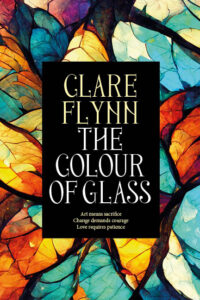 She’s dutiful. He’s defiant. Each knows what they want. Neither knows what they need.
She’s dutiful. He’s defiant. Each knows what they want. Neither knows what they need.
England, 1908. Alice Dalton bows to the will of her aristocrat parents and agrees to marry the elder son of a wealthy stockbroker to bolster the failing family finances. But on the morning of her engagement, Alice confronts a shocking betrayal by her fiancé that ends in a heartbreaking tragedy.
His younger brother, Edmund, an up-and-coming stained glass artist is driven by passion for his art and love for a fellow student. His domineering father has other plans, demanding Edmund takes his brother’s place and marries Alice.
Alice, tired of being used as a pawn, turns to the women’s suffrage movement. And Edmund, torn between duty and emotion, chooses to follow his heart.
Can Alice and Edmund each find fulfilment in a world where duty, money and class jeopardise their dreams?
Click here to read on Kindle Unlimited: https://mybook.to/glass
Alison Morton is the author of Roma Nova thrillers – INCEPTIO, CARINA (novella), PERFIDITAS, SUCCESSIO, AURELIA, NEXUS (novella), INSURRECTIO and RETALIO, and ROMA NOVA EXTRA, a collection of short stories. Audiobooks are available for four of the series.Double Identity, a contemporary conspiracy, starts a new series of thrillers. JULIA PRIMA, a new Roma Nova story set in the late 4th century, is now out.
Find out more about Roma Nova, its origins, stories and heroines and taste world the latest contemporary thriller Double Identity… Download ‘Welcome to Alison Morton’s Thriller Worlds’, a FREE eBook, as a thank you gift when you sign up to Alison’s monthly email update. You’ll also be among the first to know about news and book progress before everybody else, and take part in giveaways.
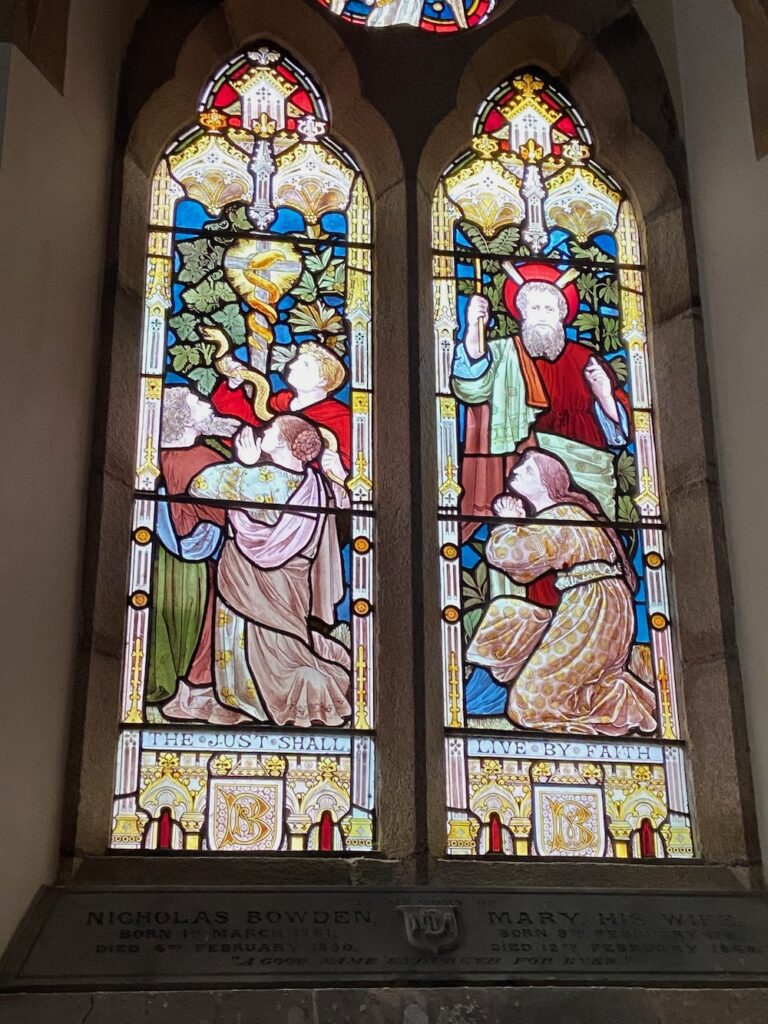
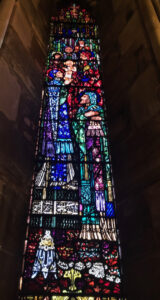












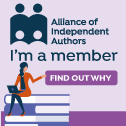
Thank you so much for inviting me onto your blog, Alison and for asking such great questions